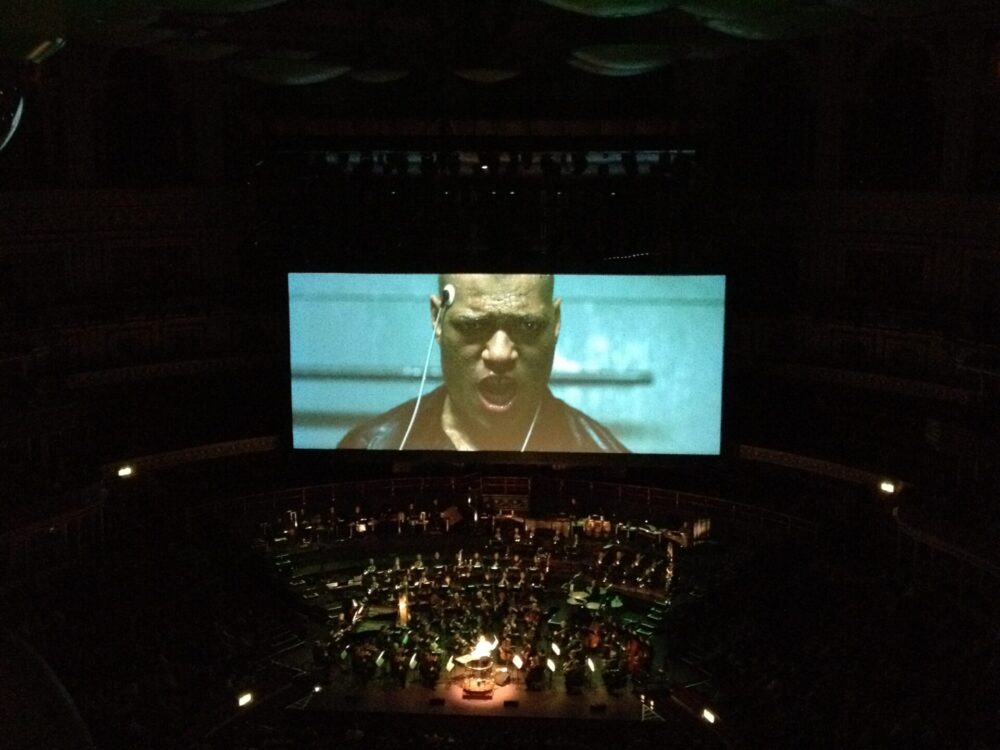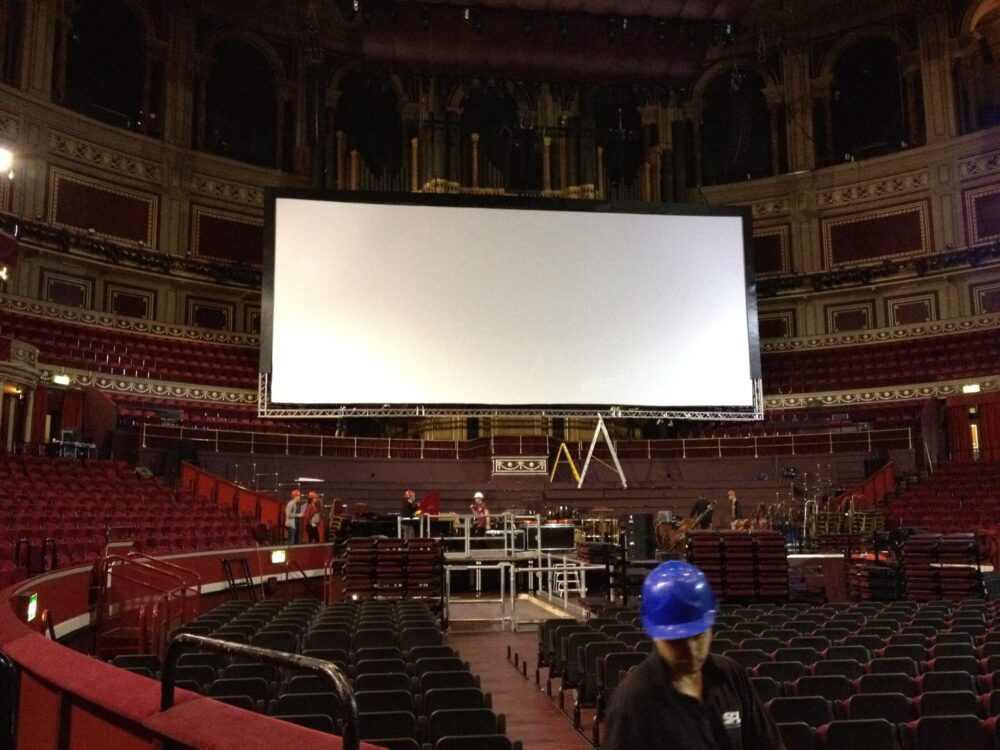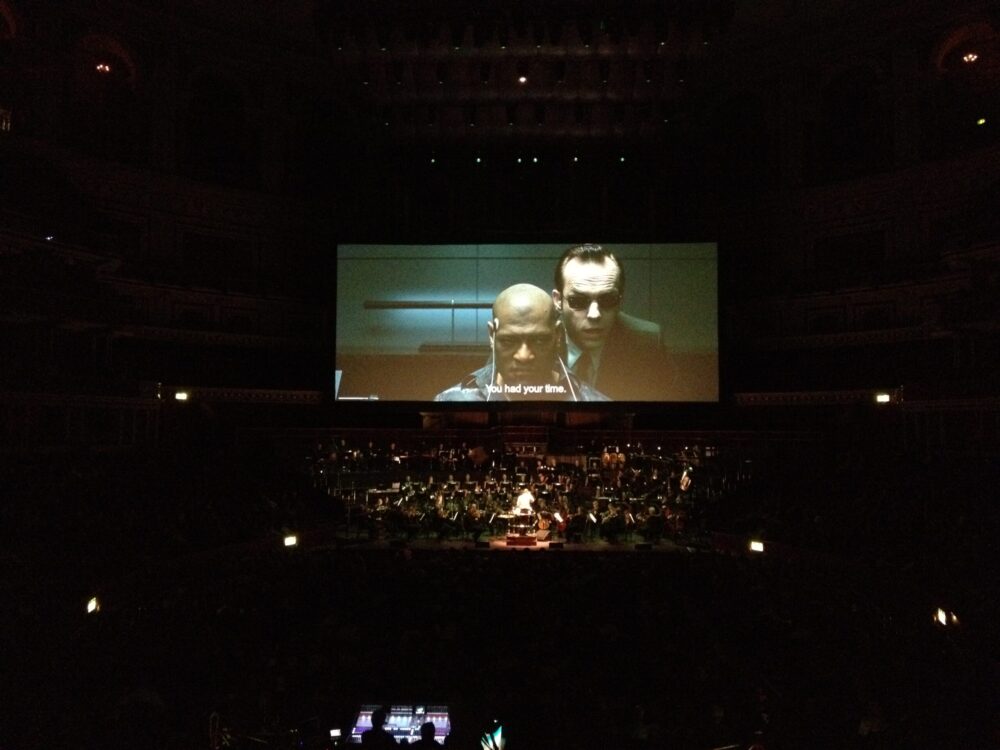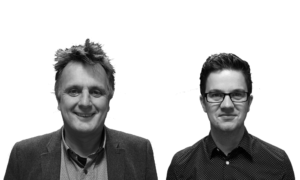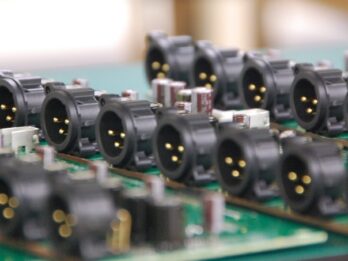Matrix Live
DiGiCo SD7 brings wow factor to The Matrix Live at the RAH
Article courtesy of Pro Sound News Europe December 2011 Edition, Dave Robinson
The Matrix Live, staged at London’s Royal Albert Hall on 23 October, was the latest in the venue’s own promoted series of classic film screenings. In what was a complex audio production, the orchestral soundtrack of the 1999 ground breaking sci-fi thriller The Matrix was replaced by a live performance from the NDR Pops orchestra, with a DiGiCo SD7 digital mixing console employed to bring both live and pre-recorded elements together.
This sold-out performance followed three highly successful screenings of the Lord of the Rings trilogy, accompanied by the London Philharmonic Orchestra, in 2009 and 2010. However, The Matrix Live differed from the Lord of the Rings in its use of a full 5.1 surround sound system to provide a true cinematic experience, and complementing the high-definition playback of the film. And a lot more sound effects for guns and kung fu, of course…
Reading-based SFL Group supplied the audio equipment, which included the DiGiCo SD7 console used by the orchestra’s front of house engineer of choice, Holger Schwark. “The SD7 is my favourite console for a variety of reasons,” says Schwark. “I think it’s the most versatile, it has the most convenient mixing surface, has enough inputs and outputs and the metering is fantastic. It has all the tools I need.” Schwark had been using an SD7 throughout Take That’s Progress Live tour this summer where, as Pet Shop Boys FOH engineer, he manned one for the band’s support set. With the 60- piece orchestra to mix on The Matrix Live, as well as the other soundtrack elements, he wanted the channel count and versatility that the SD7 provided. “The orchestral part of the film’s soundtrack was removed, which left 30 channels of the film’s dialogue, sound effects and non-orchestral music, plus a back-up soundtrack,” says SFL’s Mark Payne. “Synced to the video, these were routed through the SD7, together with the mic inputs from the orchestra. It made watching the film literally an orchestral experience.”
The PA comprised L-Acoustics line source products modelled by Payne in their proprietary SOUNDVISION 3D modelling software. The system was set up in a 5:1 format with the Left/Right part of the film source and the main orchestra being taken care of by 12 KARA per side, and the low frequencies being routed to two central hangs of four SB18 subs set in a cardioid pattern. The centre section of the 5:1 comprised 12 small-format KIVA line source speakers positioned upstage centre above the screen. These were chosen for their natural vocal presence, seamless 100º horizontal coverage pattern and up to 15º per box inter element angle. Various other pairs of KIVA were also used on outfill and frontfill duties. “Most of the dialogue was mixed on the central channel, but the sound effects and non orchestral music were mixed LCR, subs and surround, as required. The orchestra itself was mixed left-right,” says Schwark. “Sound effects are a big element in the film, so it was worth performing with a surround system. The challenge for us was that cinemas are designed expressly for showing films, so they have loudspeakers placed wherever they are needed.
The Royal Albert Hall is a very different kind of space, but we achieved the same thing by placing ‘galleries’ of L-Acoustics loudspeakers at two different levels. The amount of surround sound that people experienced depended on where they were sitting, but in the majority of the seats there was a sense of the additional space that they created in the soundtrack.” “One of the trickiest things to overcome was having the dialogue coming largely from the central speaker cluster,” adds Payne. “Ensuring that the dialogue was clear in every seat was an issue. We did compromise with a few fills in the difficult corners, but it didn’t make any noticeable difference to the people in those seats.” A related challenge for Schwark was that this was in essence a live classical performance, but films tend to be mixed with the dialogue at a reference level and the rest of the soundtrack accommodated around it. “Because the audience needs to understand all the dialogue, if a character shouts it may be a little louder, but if somebody whispers it will be turned up. It means that the actual loudness of a film’s dialogue is fairly constant in the cinema. The music is often mixed in the background, to ensure the overall soundtrack stays within a certain dynamic range,” says Schwark. “The acoustics of cinemas are as dry as possible, but in a lively concert venue like the Albert Hall I couldn’t really turn the orchestra down – it would still be heard, without a single loudspeaker involved! So I was effectively mixing the film in reverse – ensuring that the dialogue and sound effects stayed just on top of the music enough so that they could be clearly heard, without making the overall experience a mish-mash of sound.” “We needed to mic the orchestra to help balance all the elements of the production and add a little brightness, to give it an appropriate cinematic feel. For this we used a range of highquality studio mics, including Neumann, Schoeps, Sennheiser and AKG.” One of the major issues faced by the audio team was that there was no chance of booking the venue for a technical rehearsal, as it is in constant use. “I did lose a bit of sleep over that,” Payne admits. “Fortunately, as we were using the L-Acoustics system, we could model what the sound would be like in the venue. The combination of that and our experience meant that we could design the right system.
” The DiGiCo SD7 definitely helped in the ‘rightness’ of the system, allowing Schwark to concentrate on mixing the production, while his assistant took care of any niggles. “A big advantage of the SD7 is that it is very easy to have two operators using it at the same time by duplicating layers of channels to both sides of the console,” he says. “For any show above 40 or 50 channels, it is very helpful to have a second person for things like checking signals, or listening in to certain microphones to check their sound. We had 24 microphones for the string section alone and if I thought two or three were a little harsh, it would take a couple of minutes to listen to each one for a few seconds, in which time I would have lost contact with what was going on in the overall mix. Having an assistant who could do that for me was very useful.” Schwark was also impressed with DiGiCo’s new SD-Racks. “I was surprised and very pleased that using the new SD-Racks makes a notable difference in the clarity of mixing 60 open condenser mics for the orchestra. I have always liked the sound quality of the DiGiCo converters, but to me the new racks sound even more transparent,” he says. “I ran the session at 48k, so I am now looking forward to trying the new higher sample rates.” He continues: “It was an enjoyable and exciting production to mix. We were making a new balance of the soundtrack without losing any of the elements, but with the emphasis on the music, because of course it was really a concert with a film. “At the same time, people came to see it because of the film. They got sucked into the movie and tended to forget about the live performance until the end credits, when the lights came up and they all suddenly went ‘Wow!’”.
The Royal Albert Hall will next be presenting West Side Story screenings with a live orchestra as part of the films 50th anniversary celebrations between 22-24 June 2012.
Gallery
